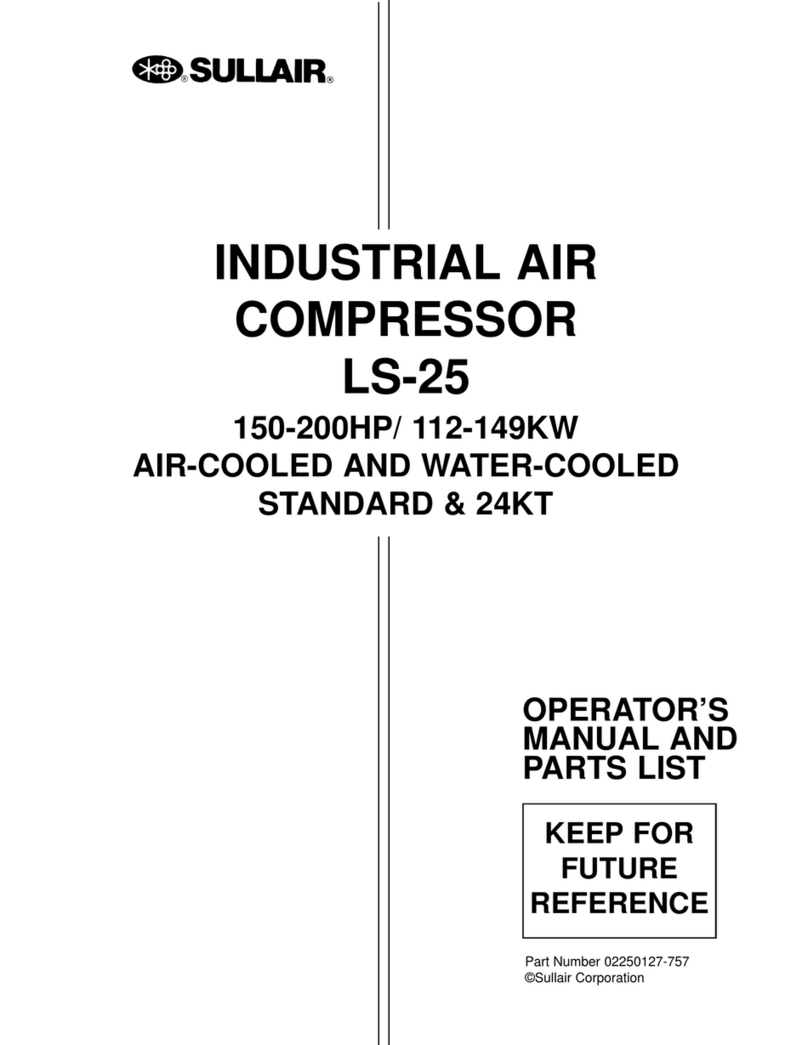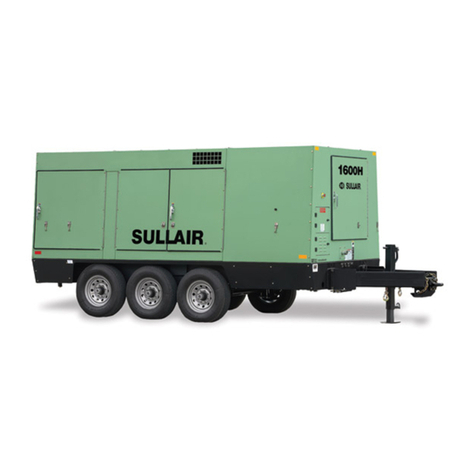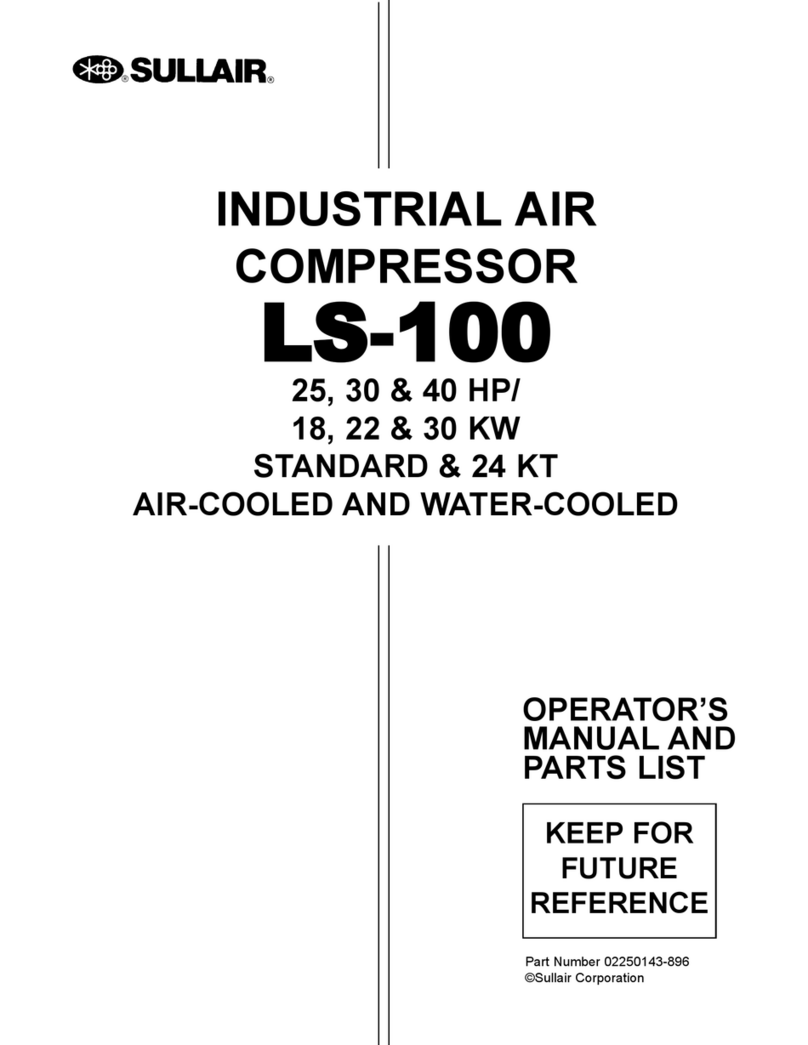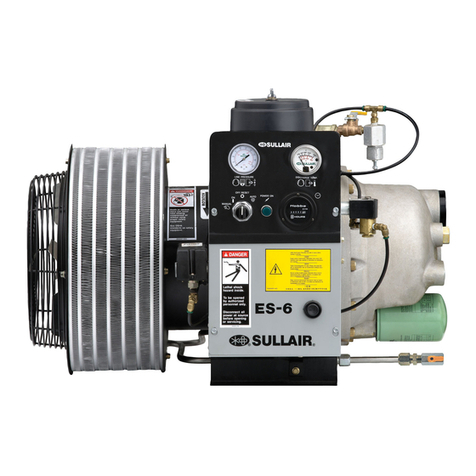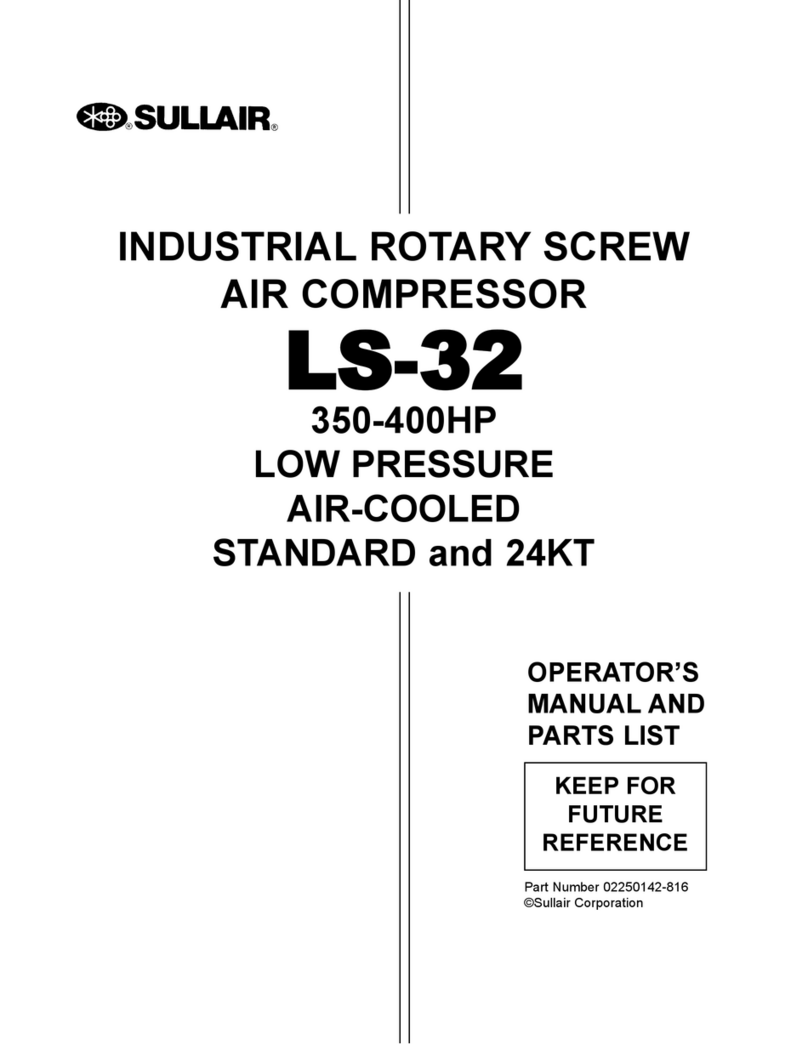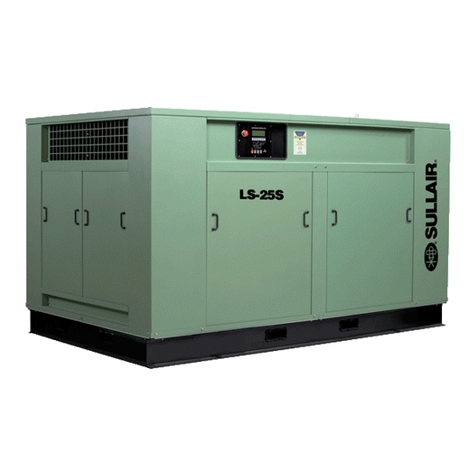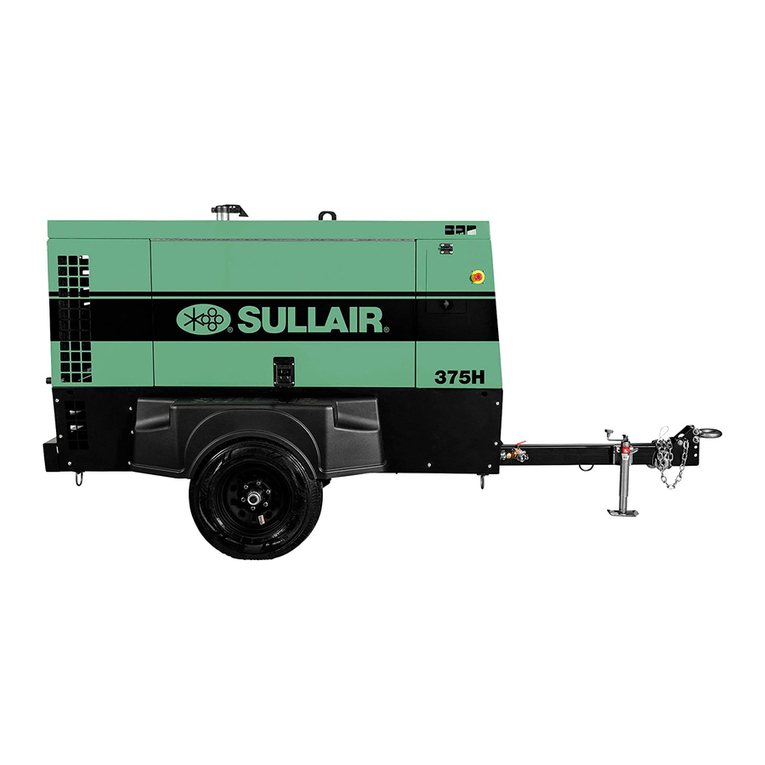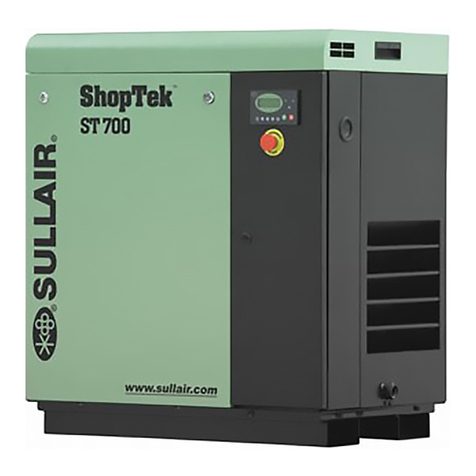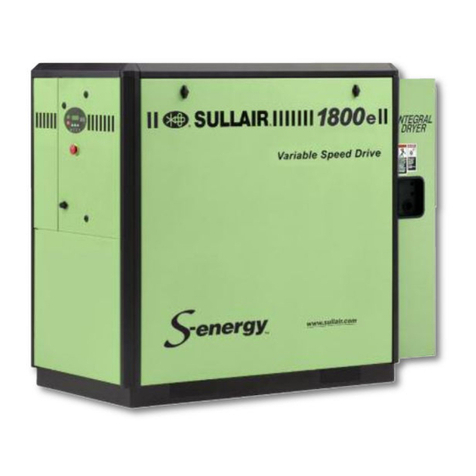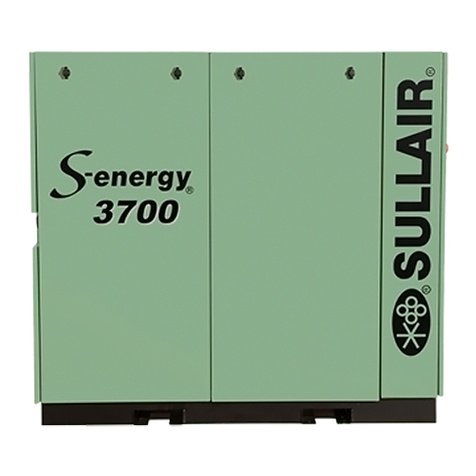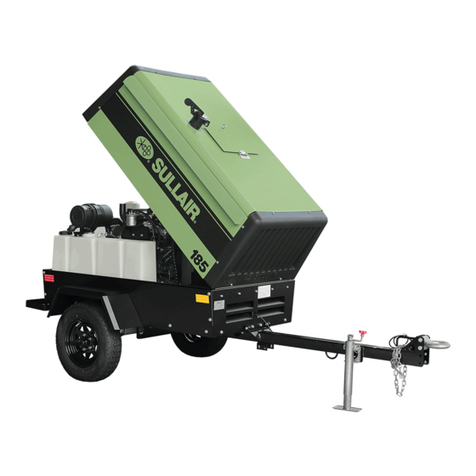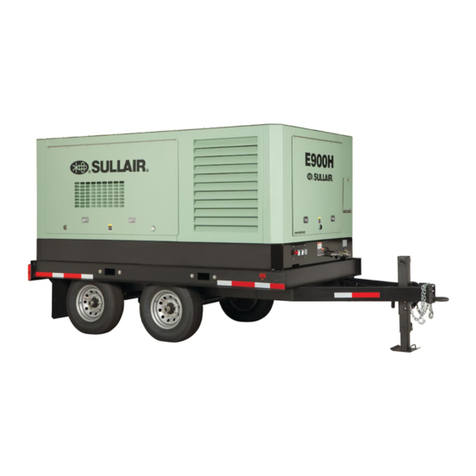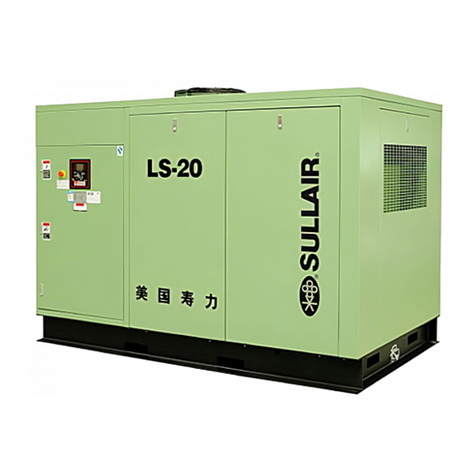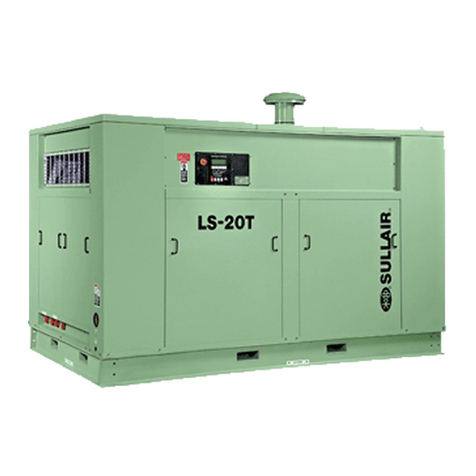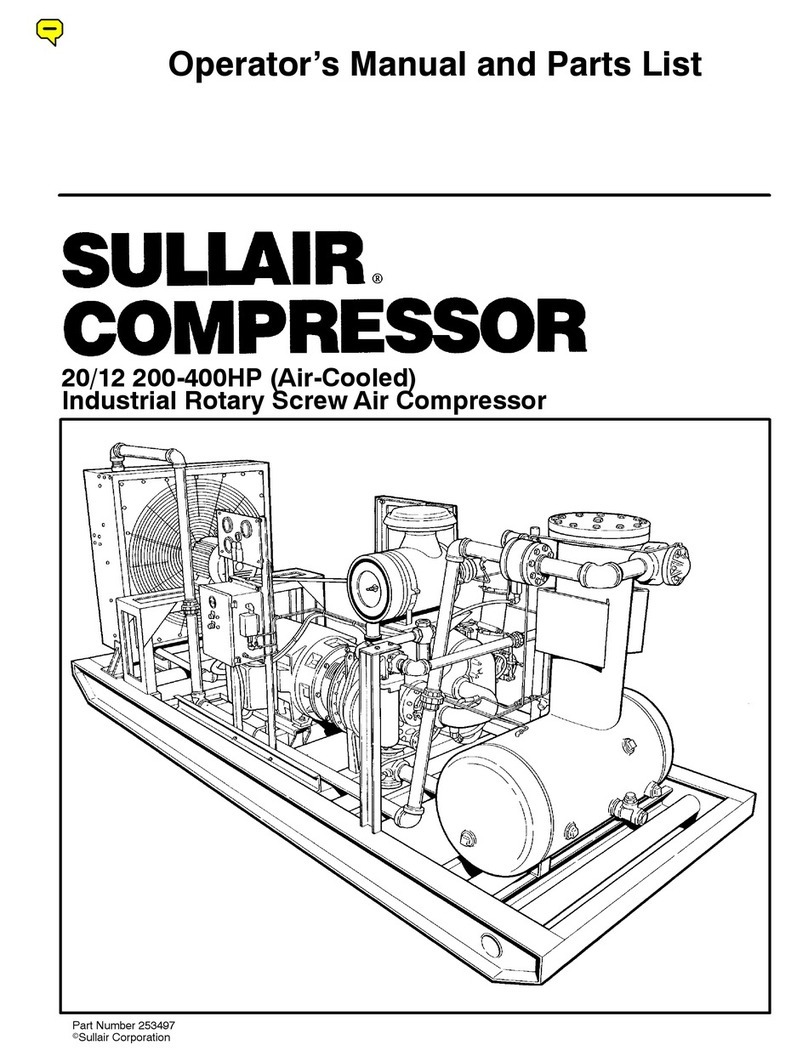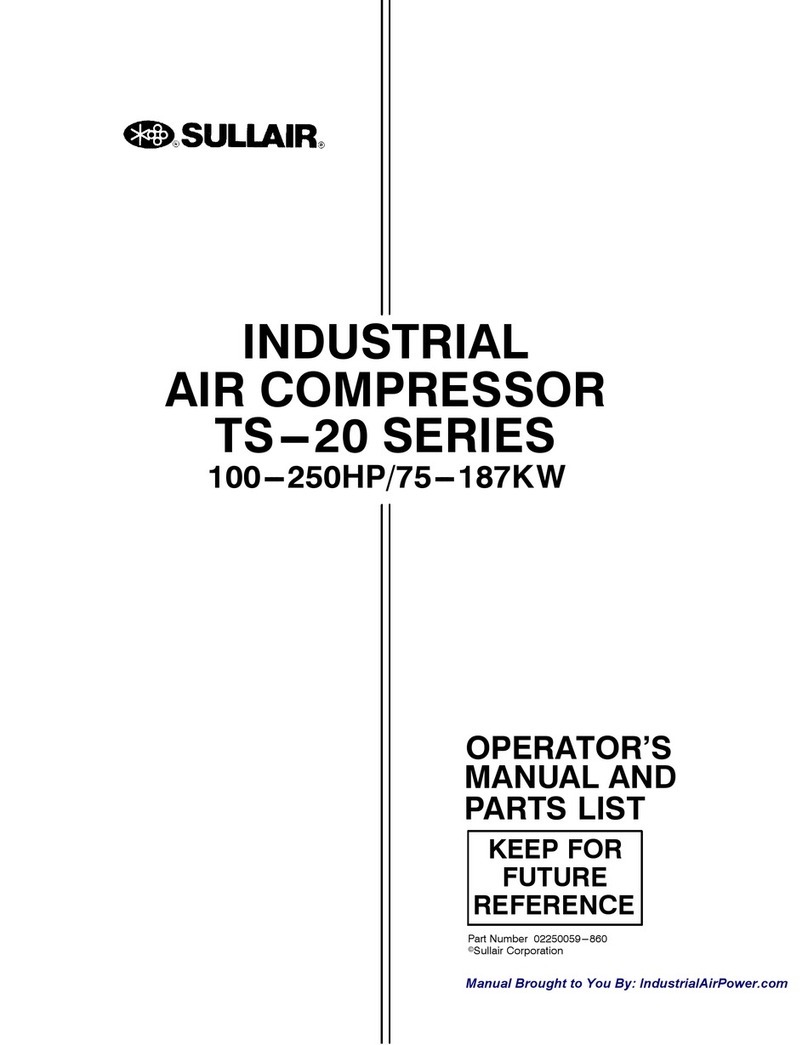
4
SECTION 1
Lower front screw jack and/or any front and rearH.
stabilizer legs. Make sure the surface they contact
has sufcient load bearing capability to support the
weight of the compressor.
If a caster wheel is provided on the screw jack, it isI.
part of the screw jack and cannot be removed. Follow
the same procedure for stowing away the wheeled
jack as you would for the standard screw jack. Raise
the screw jack to its full upright position and pull the
pin connecting the jack to the drawbar. Rotate the
screw jack to its stowed position, parallel to the
drawbar and reinsert the pin. Make sure the jack is
secured in place prior to towing.
Disconnect coupling device, keeping hands andJ.
ngers clear of all pinch points. If the compressor is
provided with a drawbar, DO NOT attempt to lift the
drawbar or if hinged, to raise it to the upright position
by hand, if the weight is more than you can safely
handle. Use a screwjack or chain fall if you cannot lift
or raise the drawbar without avoiding injury to
yourself or others.
When possible, stow hinged drawbar in the verticalK.
upright position. Make certain it is securely latched in
the vertical upright position. Keep feet clear of
drawbar at all times to avoid crushing accidents in
case it should slip from your hands or otherwise fall
to the ground.
Move the towing vehicle well clear of the parkedL.
compressor and erect hazard indicators, barricades
and/or ares (if at night) if compressor is parked on or
adjacent to public roads. Park so as not to interfere
with trafc.
PRESSURE RELEASE1.3
Open the pressure relief valve at least weekly toA.
make sure it is not blocked, closed, obstructed or
otherwise disabled.
Install an appropriate ow-limiting valve between the B.
compressor service air outlet and the shutoff (throttle)
valve, when an air hose exceeding 1/2" (13 mm)
inside diameter is to be connected to the shutoff
(throttle) valve, to reduce pressure in case of hose
failure, per OSHA Standard 29 CFR 1926.302 (b) (7)
or any applicable Federal, State and Local codes,
standards and regulations.
When the hose is to be used to supply a manifold,C.
install an additional appropriate ow-limiting valve
between the manifold and each air hose exceeding
1/2" (13 mm) inside diameter that is to be connected
to the manifold to reduce pressure in case of hose
failure.
Provide an appropriate ow-limiting valve for each D.
additional 75 feet (23 m) of hose in runs of air hose
exceeding 1/2" (13 mm) inside diameter to reduce
pressure in case of hose failure.
Flow-limiting valves are listed by pipe size and ratedE.
CFM. Select appropriate valve accordingly.
DO NOTF. use tools that are rated below the maximum
rating of this compressor. Select tools, air hoses,
pipes, valves, lters and other ttings accordingly. DO
NOT exceed manufacturer’s rated safe operating
pressures for these items.
Secure all hose connections by wire, chain or otherG.
suitable retaining device to prevent tools or hose
ends from being accidentally disconnected and
expelled.
Open uid ller cap only when compressor is not H.
running and is not pressurized. Shut down the
compressor and bleed the sump (receiver) to zero
internal pressure before removing the cap.
WARNING
This equipment may be tongue heavy.
DO NOT attempt to raise or lower the
drawbar by hand if the weight is more
than you can safely handle.
NOTE
While not towed in the usual sense of
the word, many of these instructions
are directly applicable to skid-
mounted portable air compressors as
well.
CAUTION
Retract the front screw jack only
after attaching the compressor to the
tow vehicle. Raise the screw jack to
its full up position and pull the pin
connecting the jack to the drawbar.
Rotate the screw jack to its stowed
position, parallel to the drawbar, and
reinsert the pin. Make sure the jack is
secured in place prior to towing.
On two-wheeled models, fully
retract front screw jack and any rear
stabilizer legs. If a caster wheel is
provided on the screw jack it is part
of the screw jack and can not be
removed. Follow the same procedure
for stowing away the wheeled jack
as you would for the standard screw
jack. Pull the pin connecting the jack
to the drawbar and raise the screw
jack to its full up position. Rotate the
screw jack to its stowed position,
parallel to the drawbar, and reinsert
the pin. Make sure the jack is secured
in place prior to towing.


